
How to Use MAX30102 HR + SpO2 sensor: Examples, Pinouts, and Specs
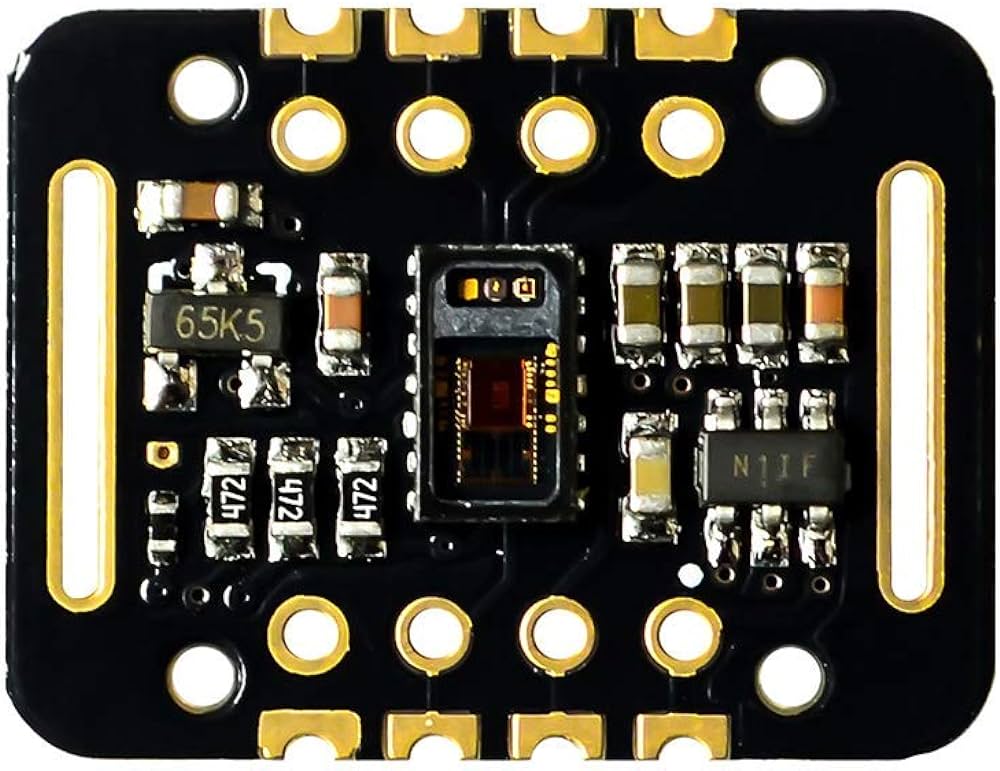
 Design with MAX30102 HR + SpO2 sensor in Cirkit Designer
Design with MAX30102 HR + SpO2 sensor in Cirkit DesignerIntroduction
The MAX30102 is an integrated pulse oximetry and heart-rate monitor sensor module. It combines two LEDs, a photodetector, optimized optics, and low-noise analog signal processing to detect pulse oximetry and heart-rate signals. The MAX30102 is widely used in wearable health devices, fitness trackers, and medical monitoring devices due to its small form factor and low power consumption.
Explore Projects Built with MAX30102 HR + SpO2 sensor
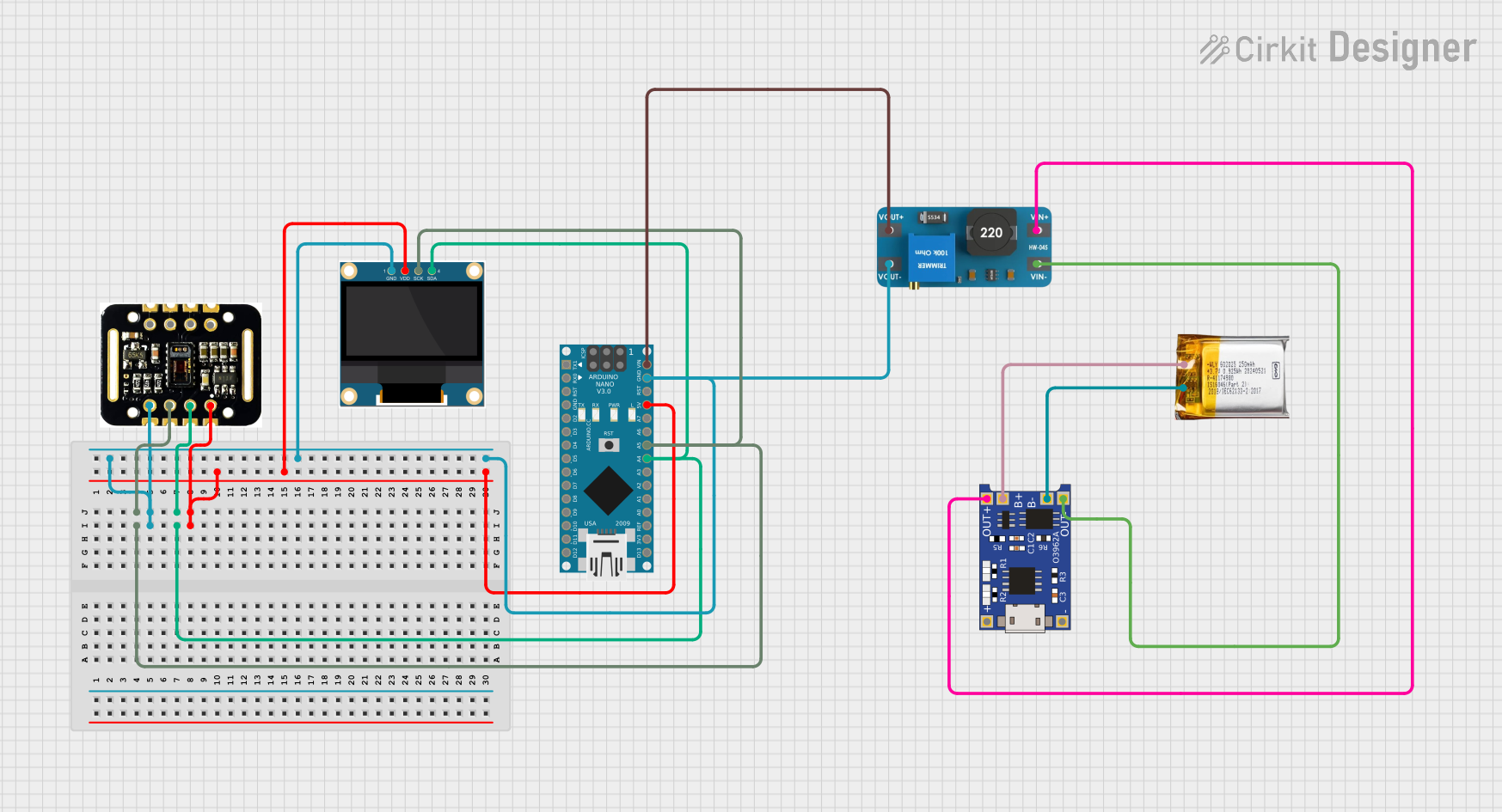
 Open Project in Cirkit Designer
Open Project in Cirkit Designer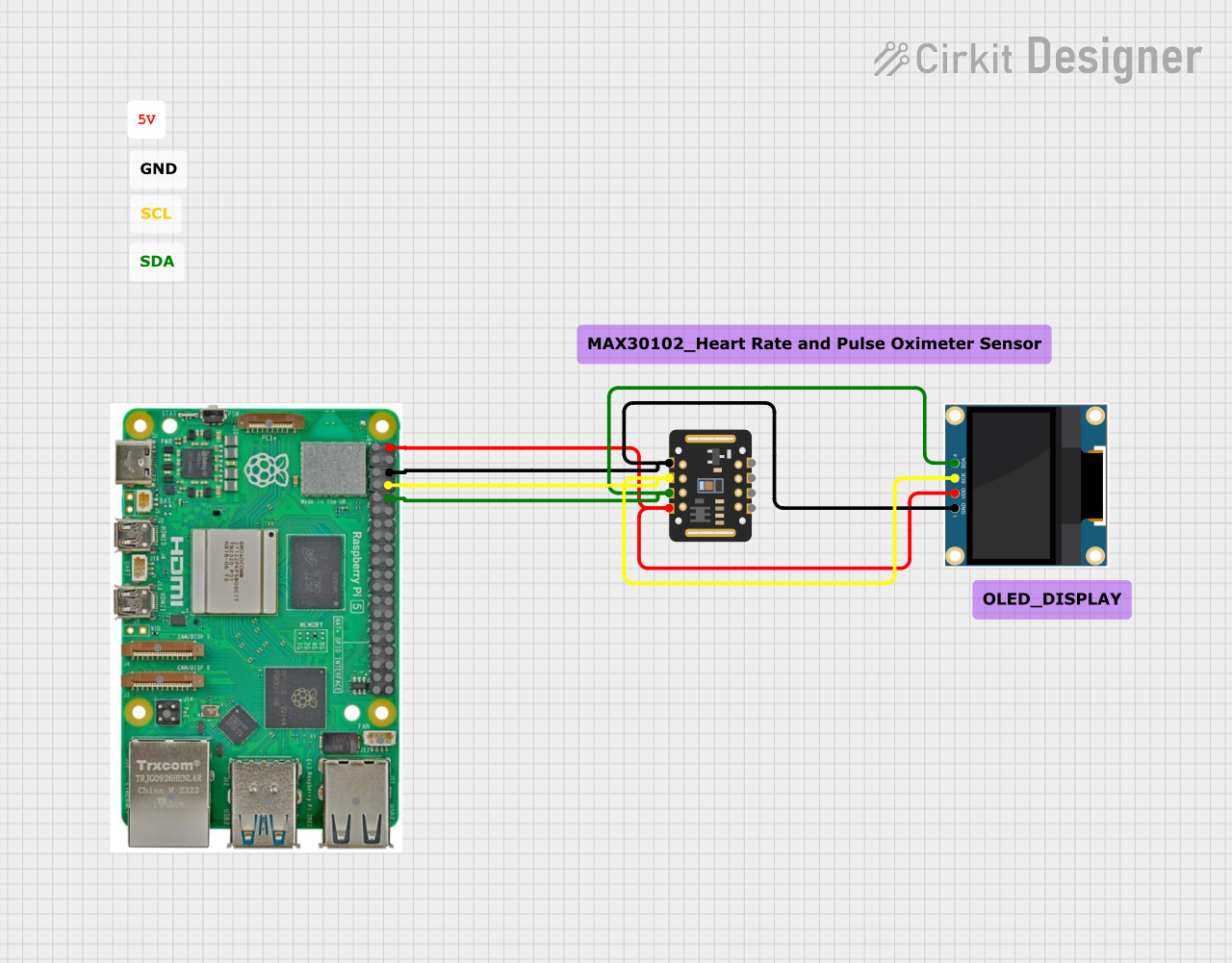
 Open Project in Cirkit Designer
Open Project in Cirkit Designer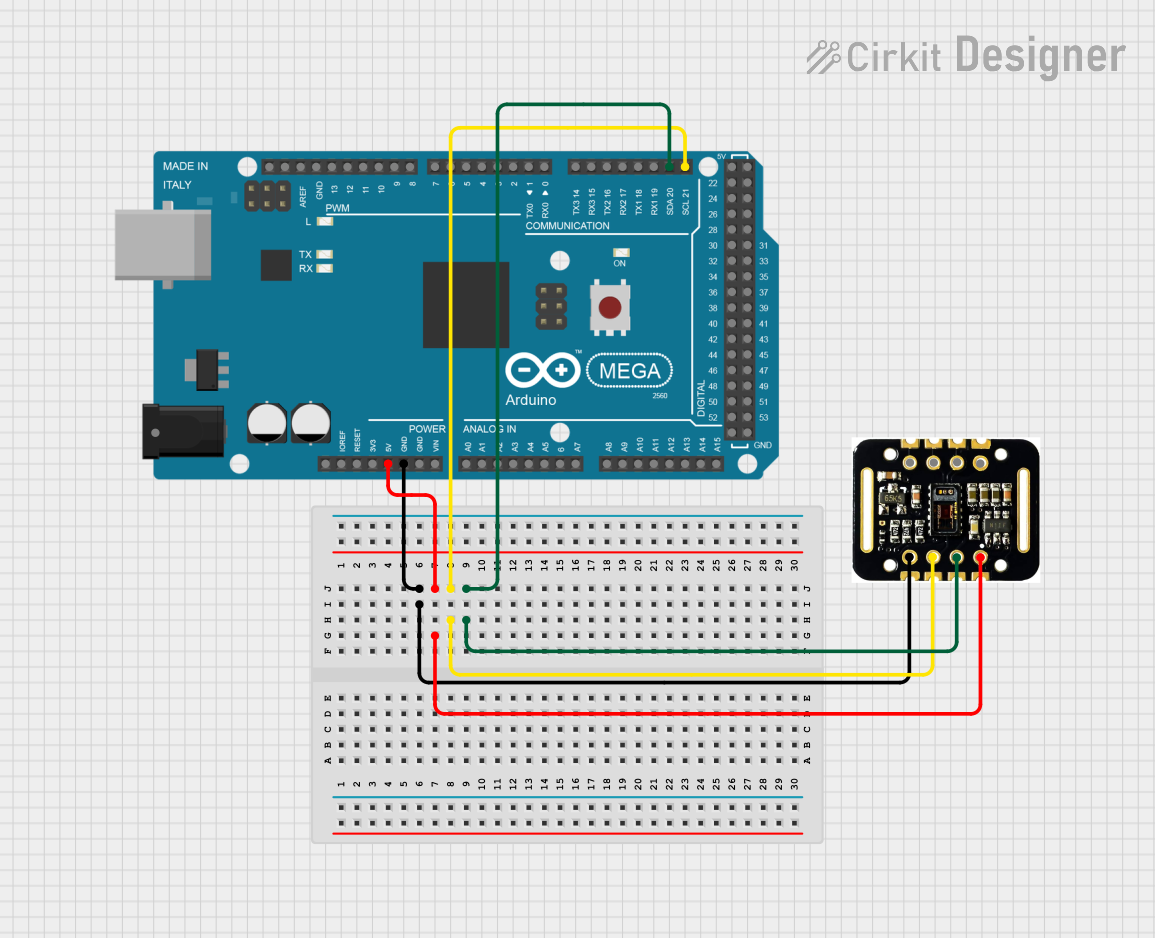
 Open Project in Cirkit Designer
Open Project in Cirkit Designer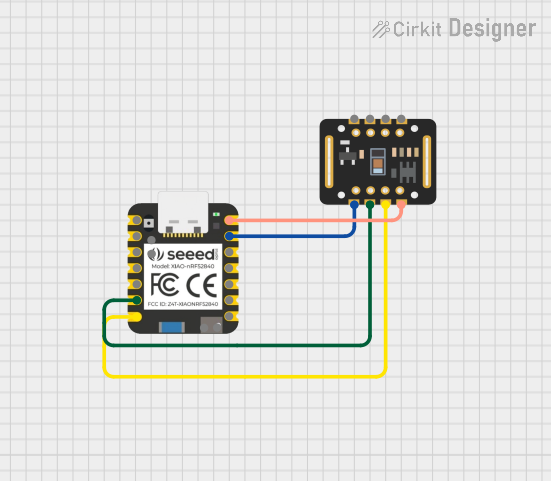
 Open Project in Cirkit Designer
Open Project in Cirkit DesignerExplore Projects Built with MAX30102 HR + SpO2 sensor

 Open Project in Cirkit Designer
Open Project in Cirkit Designer
 Open Project in Cirkit Designer
Open Project in Cirkit Designer
 Open Project in Cirkit Designer
Open Project in Cirkit Designer
 Open Project in Cirkit Designer
Open Project in Cirkit DesignerCommon Applications and Use Cases
- Wearable devices for heart rate monitoring
- Fitness trackers that measure blood oxygen levels
- Portable medical monitoring devices
- Sleep tracking devices
Technical Specifications
Key Technical Details
- Power Supply Voltage (VCC): 1.8V to 3.3V
- Operating Current: 0.6mA (typical) during Heart Rate and SpO2 measurement
- Peak LED Output Current: 50mA (maximum)
- Operating Temperature Range: -40°C to +85°C
- Communication Interface: I2C (up to 400kHz)
Pin Configuration and Descriptions
| Pin Number | Name | Description |
|---|---|---|
| 1 | VIN | Power supply (1.8V to 3.3V) |
| 2 | SDA | I2C Data Line |
| 3 | SCL | I2C Clock Line |
| 4 | INT | Interrupt pin (active low) |
| 5 | IR | Infrared LED cathode |
| 6 | R | Red LED cathode |
| 7 | GND | Ground |
Usage Instructions
How to Use the Component in a Circuit
- Power Supply: Connect the VIN pin to a 1.8V to 3.3V power source and the GND pin to the ground.
- I2C Communication: Connect the SDA and SCL pins to the corresponding I2C data and clock lines on your microcontroller.
- Interrupts (Optional): The INT pin can be connected to an interrupt-capable GPIO pin on your microcontroller to handle events like data-ready.
Important Considerations and Best Practices
- Ensure that the power supply is stable and within the specified voltage range.
- Place the sensor close to the skin to get accurate readings.
- Avoid direct sunlight on the sensor as it may interfere with the readings.
- Use pull-up resistors on the I2C lines if they are not already present on the microcontroller board.
Example Code for Arduino UNO
#include <Wire.h>
#include "MAX30105.h" // Include the MAX30105 library
MAX30105 particleSensor;
void setup() {
Serial.begin(115200); // Initialize serial communication at 115200 baud rate
Wire.begin(); // Initialize I2C
if (!particleSensor.begin(Wire, I2C_SPEED_FAST)) { // Initialize sensor
Serial.println("MAX30102 was not found. Please check wiring/power.");
while (1);
}
particleSensor.setup(); // Configure sensor with default settings
particleSensor.setPulseAmplitudeRed(0x0A); // Set Red LED amplitude
particleSensor.setPulseAmplitudeIR(0x0A); // Set IR LED amplitude
}
void loop() {
long irValue = particleSensor.getIR(); // Read IR value
if (irValue > 50000) { // Check if the sensor is covered
// Read the heart rate and SpO2 levels
float heartRate, spO2;
if (particleSensor.checkForBeat(irValue) == true) {
if (particleSensor.getSpO2(&spO2, &heartRate)) {
Serial.print("Heart Rate: ");
Serial.print(heartRate);
Serial.print(" bpm - SpO2: ");
Serial.print(spO2);
Serial.println("%");
}
}
} else {
Serial.println("No finger?");
}
delay(1000); // Wait for 1 second before next reading
}
Troubleshooting and FAQs
Common Issues Users Might Face
- Inaccurate Readings: Ensure the sensor is properly placed on the skin and not affected by external light sources.
- No Data: Check the I2C connections and ensure the correct I2C address is used in the code.
- Sensor Not Detected: Verify the power supply and connections to the sensor.
Solutions and Tips for Troubleshooting
- If you encounter inaccurate readings, try adjusting the LED pulse amplitude settings in the code.
- For connectivity issues, use a multimeter to check the continuity of the I2C lines and the power supply.
- Ensure that the sensor is not exposed to strong electromagnetic interference.
FAQs
Q: Can the MAX30102 be used on a 5V system? A: The MAX30102 operates at 1.8V to 3.3V. A logic level converter is required for 5V systems.
Q: How can I improve the accuracy of the readings? A: Ensure a snug fit against the skin, minimize motion, and avoid direct sunlight on the sensor.
Q: What is the I2C address of the MAX30102? A: The default I2C address is 0x57 (7-bit).
Q: Can the MAX30102 measure heart rate through clothes? A: No, the sensor needs to be in direct contact with the skin for accurate measurements.